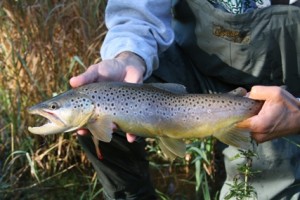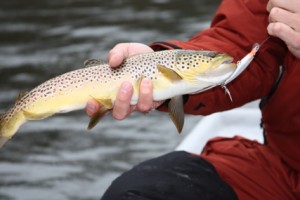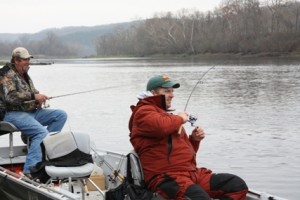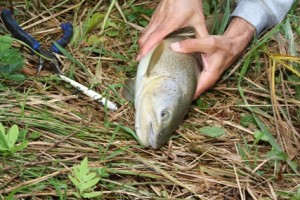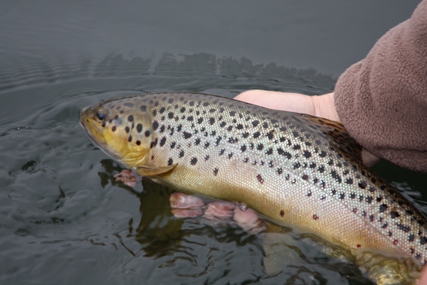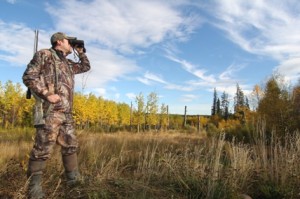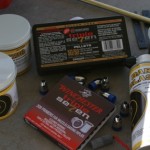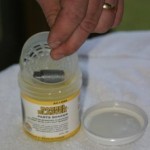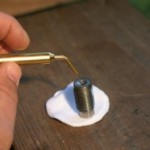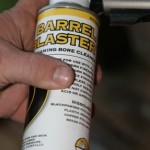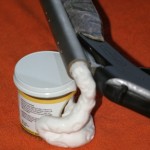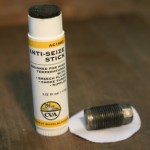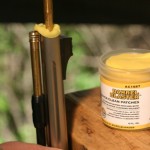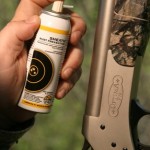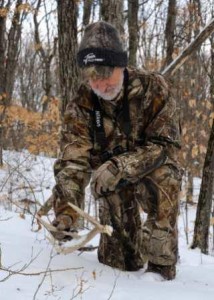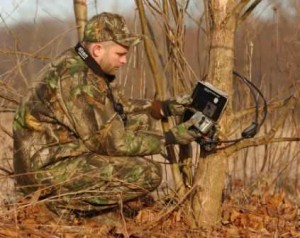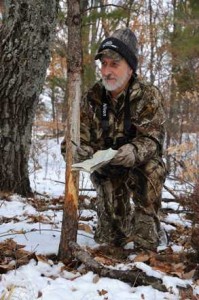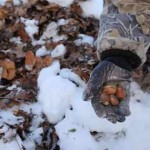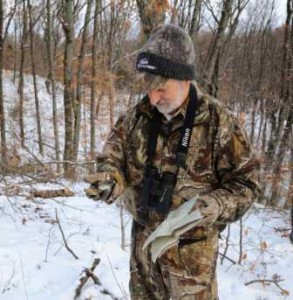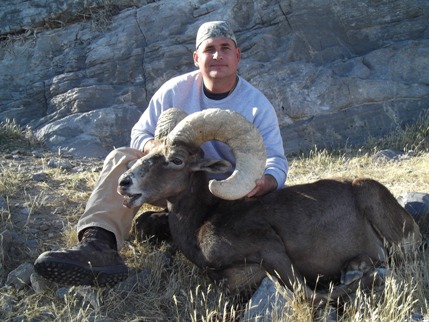The Most Deadly Lure for Big Trout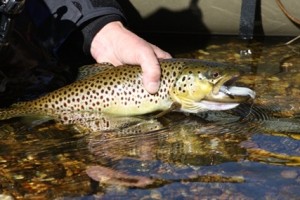
I was flush with excitement when invited to join a party of outdoor writers on a visit to Arkansas’ legendary White River with lodging at the famed Gaston’s Resort in the Ozark Mountains. Friends who had previously fished the river advised me to expect exceptional catches. But an hour after departing the boat dock with a fishing buddy and guide in one of the classic White River drift boats, we had yet to connect with a trout.
“You should have been with us yesterday morning,” said Northland Fishing Tackle representative Eric Naig, who had arrived a couple days earlier than me. “It was a trout on every cast along this very bank. Not sure why they are not biting today.”
However, our guide wasn’t ready to offer excuses. After glancing at his watch, he promised a turn around within 15 minutes.
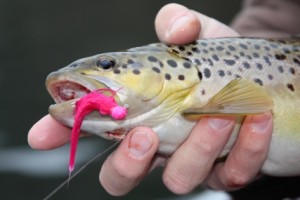
On our White River fishing trip, Eric scored a number of rainbow trout and our first brown trout with his "Pink" marabou jig. However, the larger browns came on suspending jerkbaits.
12″ Trout Began Gobbling our Bait
By the time we motored to our next spot and positioned the boat for a drift, the trout population had apparently undergone a change of attitude. As if an “on” switch had been thrown, 9″ to 12″ rainbow trout began gobbling our live bait offerings. Apparently at this time of year, rising river levels resulting from timed releases at Bull Shoals Dam are critical to turning on the trout. The gate opening schedules are monitored closely by river guides who have realized it’s like ringing the dinner bell.
Catching trout on worms isn’t rocket science. All species of trout relish small red wigglers. It’s simply a matter of tying on a #8 lightwire hook and adding the right amount of weight so the worm bounces along the bottom. Typically in small streams with light to moderate current, one or two split-shot are crimped on the line about 18″ above the bait. However, in heavier current situations, such as on the White River, a different rigging is utilized with 1/8 or 3/16-ounce bell-style or pencil sinker on a separate leader attached to a three-way swivel.
The idea of using live bait for trout would not sit well with many upper-crust fly-fishermen I know. And they would grimace at the idea of keeping a few trout. However, on the White, legal-size rainbow trout are stocked in large numbers by the state fisheries department in order to satisfy fishermen who routinely come to the river for a take-home trout dinner. Fishermen are literally expected to keep trout.
Eric and I had been tasked with providing fish for a creek side trout bake scheduled later in the day at Gaston’s outdoor pavilion for all the writers in our group. It didn’t take long to secure sufficient number of eating-size rainbows for the feast.
A More Challenging Quarry – The White River’s Prized Brown Trout
Then our attention turned to a more challenging quarry – the White River’s prized brown trout. Liberal harvest regulations apply to rainbow trout; however only 1 brown trout of at least 24″ may be harvested. Although we had no intention of keeping any browns, I was salivating at the thought of catching a few of these beautifully marked fish for photographs. Furthermore, stream-seasoned big browns certainly put up a better fight than stocked rainbows.
The manager of Gaston’s tackle shop had recommended marabou-body jigs for big browns. Fortunately, Eric had a supply of Northland’s new 1/16- and 1/8-ounce Bug-A-Boo Jigs.
Fly-fishermen offer hand-tied insect-imitating creations to trout while preaching the discipline of specific hatches. But the truth is this: big browns are basically meat eaters year round. Sure, they may slurp bugs now and then as an appetizer, but for the main course they want crawfish or large creek minnows. Marabou jigs are a good representation for both types of forage.
In an attempt to figure out the most productive color pattern for the day, Eric and I each fished a different color jig. We quickly discovered that rainbows found Eric’s “pinkie” marabou to be a more interesting meal than my black marabou. The pink marabou also scored our first moderate-size brown trout. But we still lacked a hefty brown of at least 20 inches that would allow us to say to friends “This is a White River trout!”
The Most Deadly Lure for Browns
So I reached into my tackle bag of tricks to come up with what I consider the most deadly universally effective lure for browns – a long-minnow stickbait.
In my experience, big browns are in many ways similar to river smallmouth bass. Present what appears to be a big injured minnow close to their hide, and they cannot refuse it. Nothing says ‘injured baitfish’ better than the rhythmic pull-pause of a suspending jerkbait. I figure if it works on the streams of Pennsylvania, it will work on the streams of Arkansas.
I started with a 3-1/8” #8 Rapala X-Rap in Hot Pink – the jig color which was working so well for Eric. Following an initial long first cast, I turned the reel handle several times to drive the jerkbait to its suspending depth. Then I paused for several seconds to let the bait hover while I rubbed a little feeling back into my chilled fingers. Suddenly, I felt the unmistaken jolt through the line of a fish inhaling the lure.
Caught more or less napping at the stick, I failed to deliver an appropriate hookset. The energetic fish decided grabbing air was the best way to throw the object-that-wasn’t-prey from its mouth. However by throwing the lure in such a spectacular way, it clearly showed itself to be a nice brownie.
A few casts later – another hit. This time I was properly in tune to perform a side-sweep hookset. The second brown’s spectacular air show did not result in an escape this time.
The brown trout is one of the most beautiful members of the trout family. Brownish in overall tone, the dark brown or gray-brown color on the back and upper sides fades into a rich creamy yellow on the lower sides. Large dark spots are outlined with pale halos on the sides, the back and the dorsal fin, with reddish-orange or yellow spots scattered on the sides. Browns are truly a magnificent fish.
The Hot Pink X-Rap produced several more trout before Eric also switched to a jerkbait. When he started catching them on a different color and different model, it became evident that color wasn’t the trigger as much as the jerk-pause of the stickbait. Later in the day I switched to a 5-1/2″ Xcalibur Jerkbait and continued to catch brown trout.
The trout fishing remained exceptional during the remaining days of this wintertime fishing trip, although it did require a rise in the flow to trigger the strongest bite. Live bait and small jigs certainly produced the greatest number of small trout. But each day it took a jerk to haul in trophy-size browns.
Which Jerkbait for Trout?
On a river (as opposed to a smaller stream), a 3″ to 4-1/2″ jerkbait is a good choice. The bait will hang in the water around the 3′ to 4′ depth making an easy target for a fat lazy brown trout. My favorites include a Rapala X-Rap Slashbait; XCalibur Xt3 Twitch Bait; Sebile A-Cast Minnow; or Lucky Craft Pointer 78. For typically clear water, my color picks are natural baitfish patterns and fingerling trout patterns.
However, should the water be dingy due to runoff or a dam release, you may want to jump up to slightly larger profile bait, and select a pattern with some chartreuse or hint of a bolder color in it. I recall one day on the west branch of the Delaware River with stained water, when an XCalibur Xs4 (4-1/2″) jerkbait in Sour Grape caught trout after trout, when nothing else produced. Few trout anglers would consider that large of a stickbait in such a wild color.
If you’re fishing a stream composed mainly of shallow water runs and holes that rarely exceed three or four feet, go with a 2″ to 3″ jerkbait to match the size of smaller baitfish. Sometimes, a floating stickbait would be a better choice to reduce the chances of snagging the bottom. Among the smaller baits to consider are Yo-Zuri Pins Minnow Magnet; Rapala Flat Rap; and Lucky Craft Humpback Pointer.
Baked Trout in Foil
An easy, minimal-mess recipe for Outdoor Cooks who want less time in the kitchen and more fishing time
– 4 trout (9 to 12 inches in length)
– 1 package of onion soup mix
– 1 stick margarine
– ground black pepper
– four strips bacon
(Easily adjust the recipe for more trout by including another package of soup mix/butter stick and additional bacon strips)
Clean trout and remove heads. Place each trout on individual sheet of foil. Place one strip of bacon and a couple shakes of pepper inside the cleaned cavity of each trout. Prepare soup mix by first melting one stick of margarine, then adding the dry soup mix to create soupy consistency. Pour about ¼ of the mixture on each fish. Wrap fish tightly in foil. Place on cookie sheet and bake at 350 degrees for 25-30 minutes. Alternative to oven: the foil wrapped trout may be cooked outdoors on a charcoal grill.
9,040 total views, no views today


